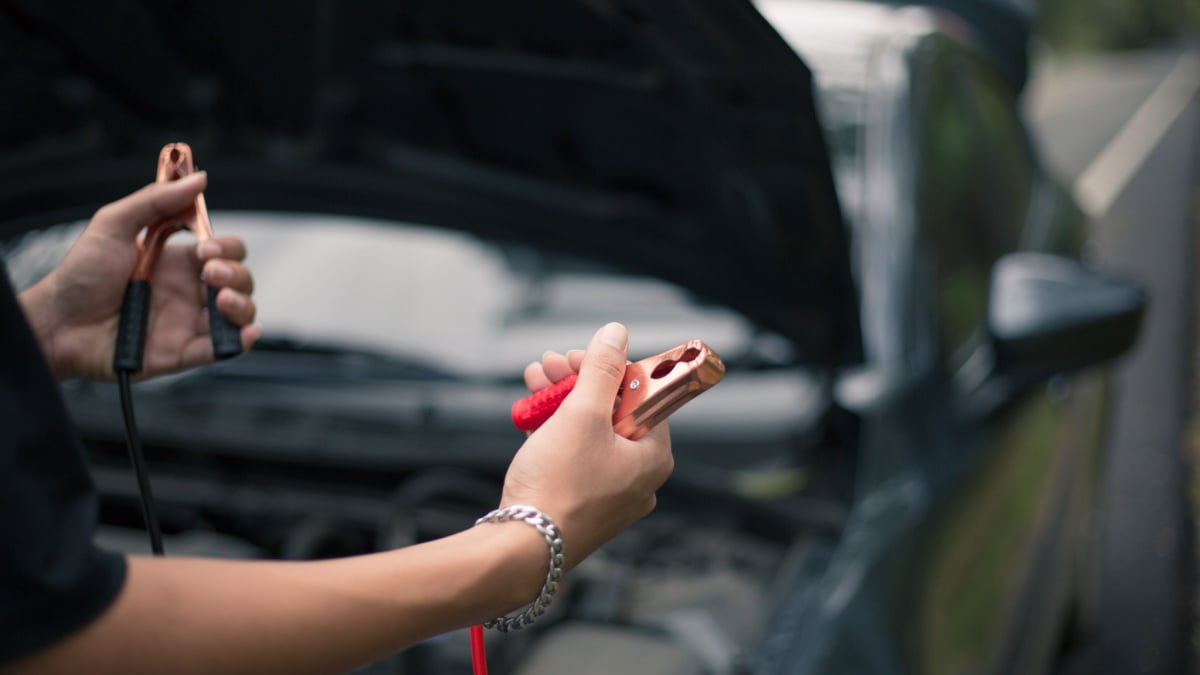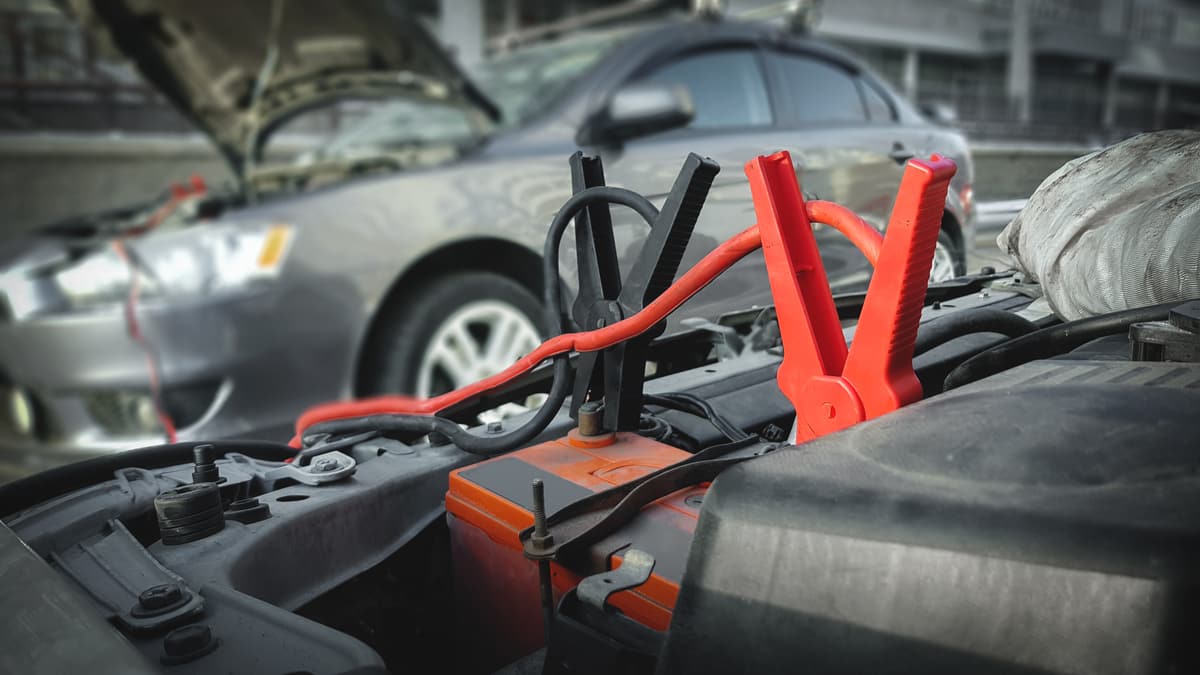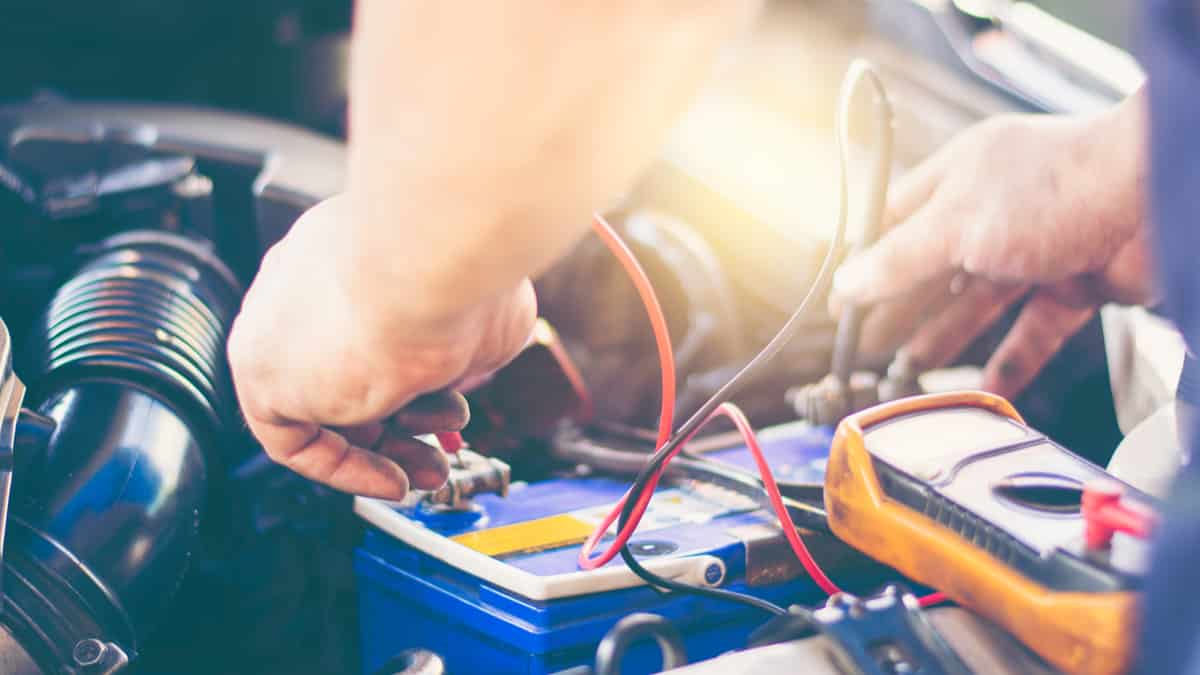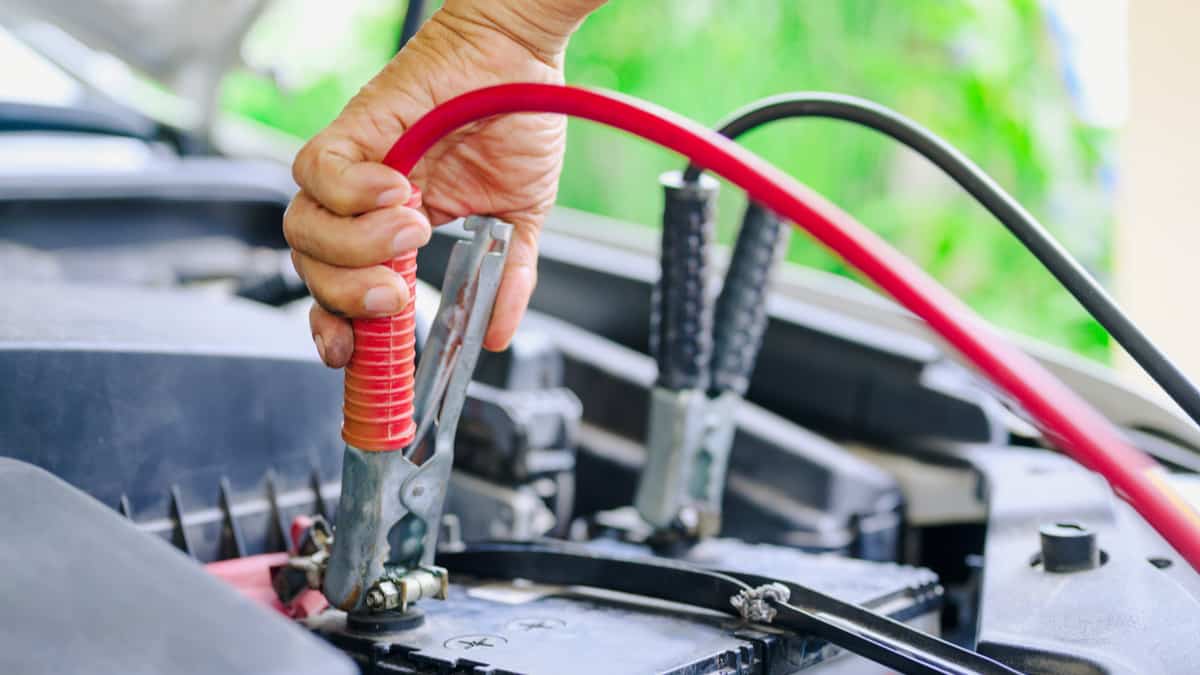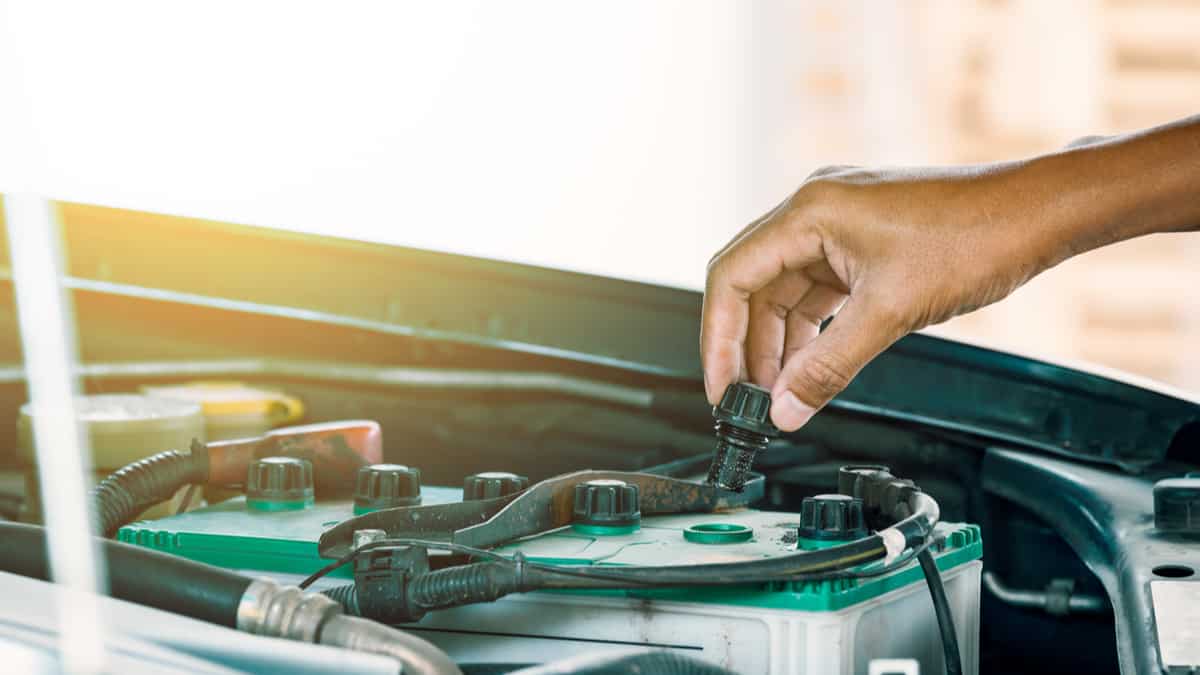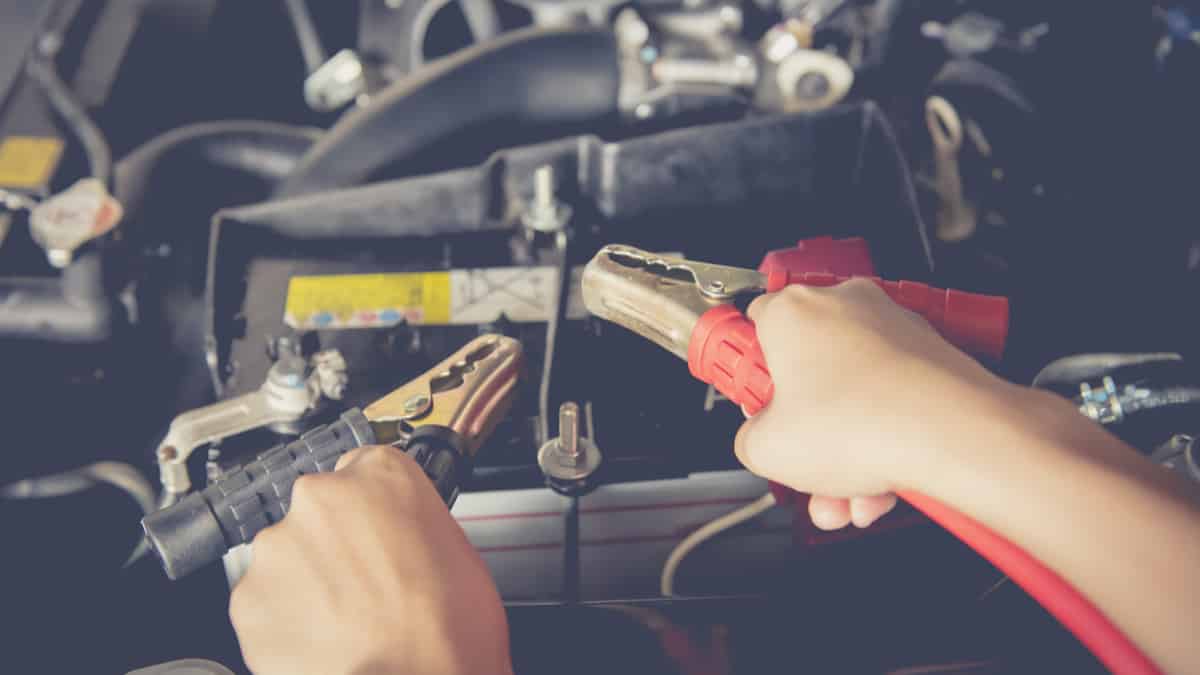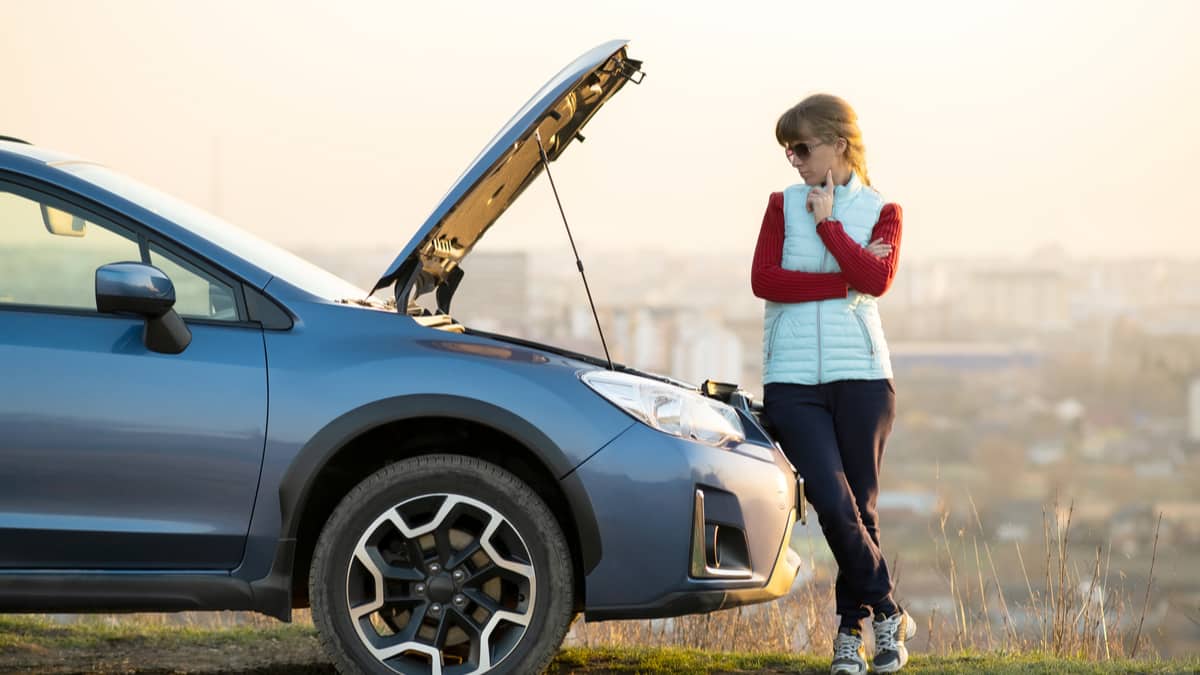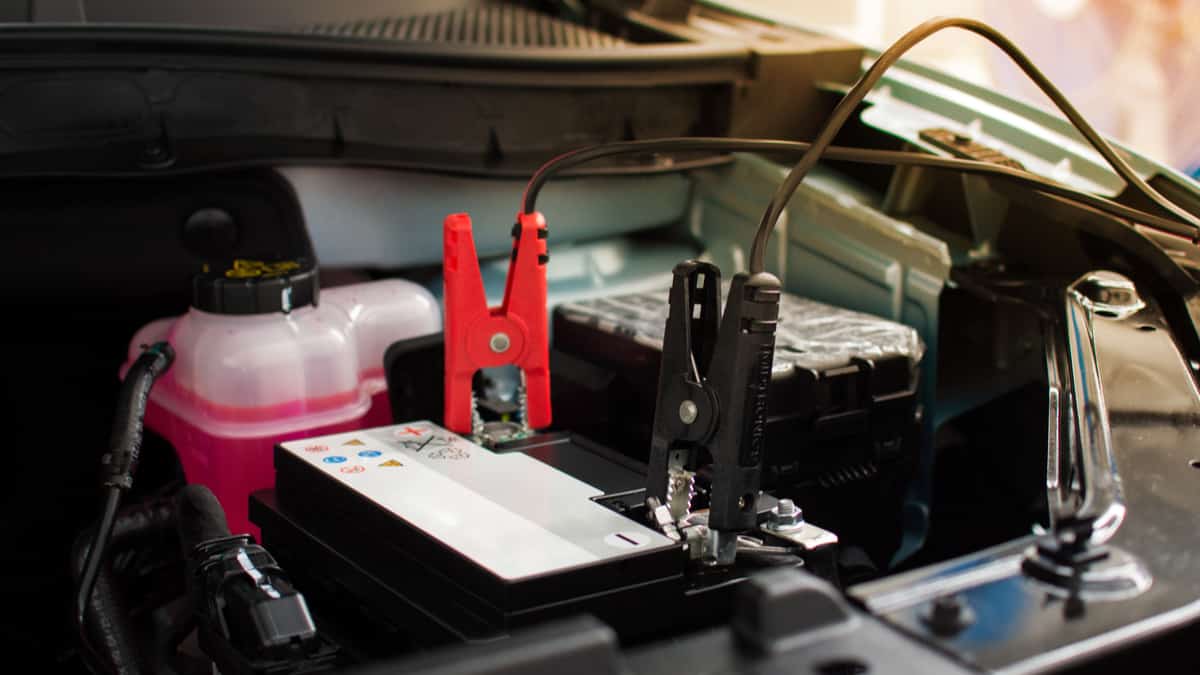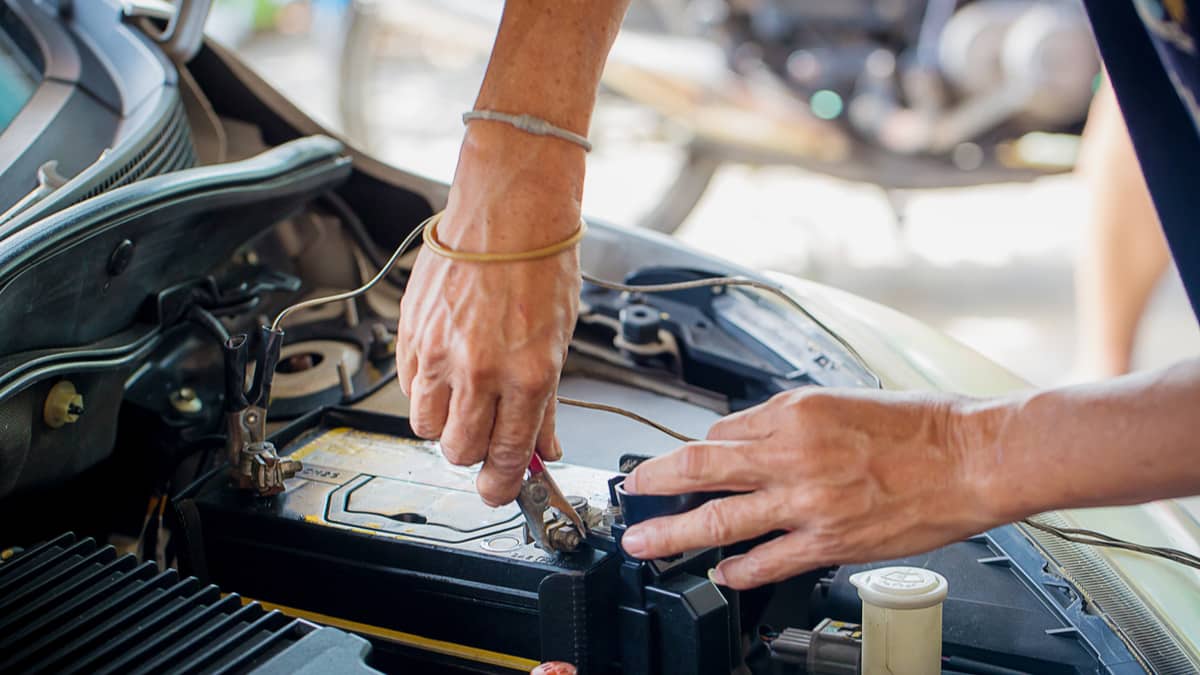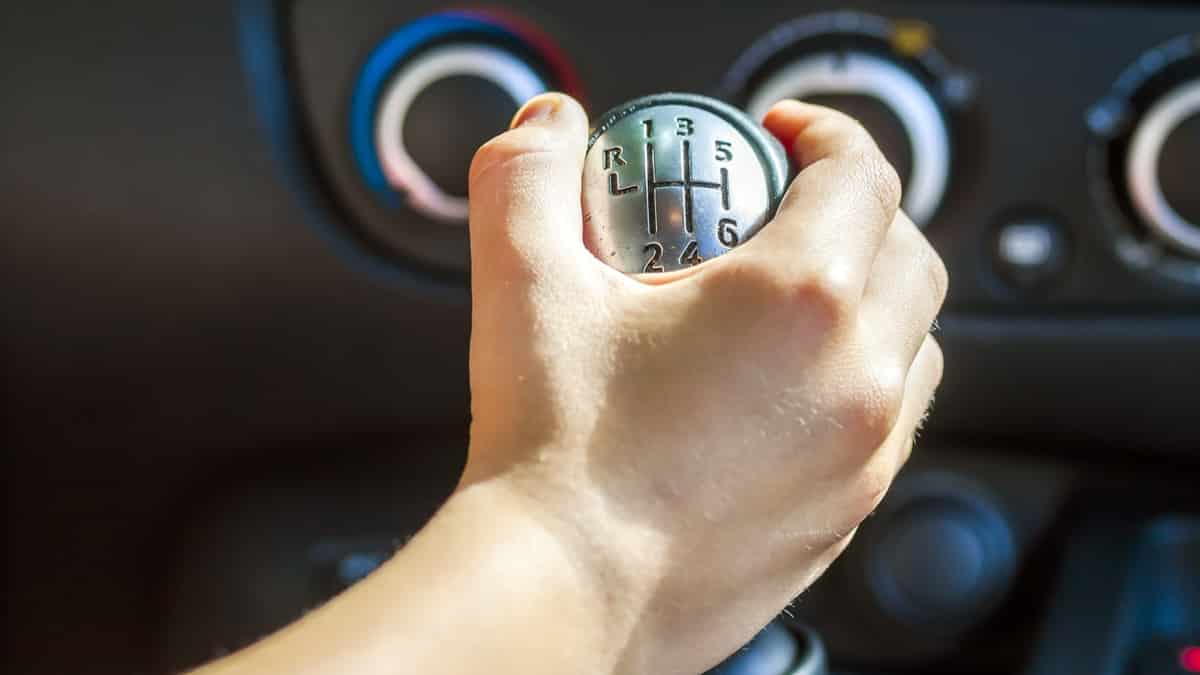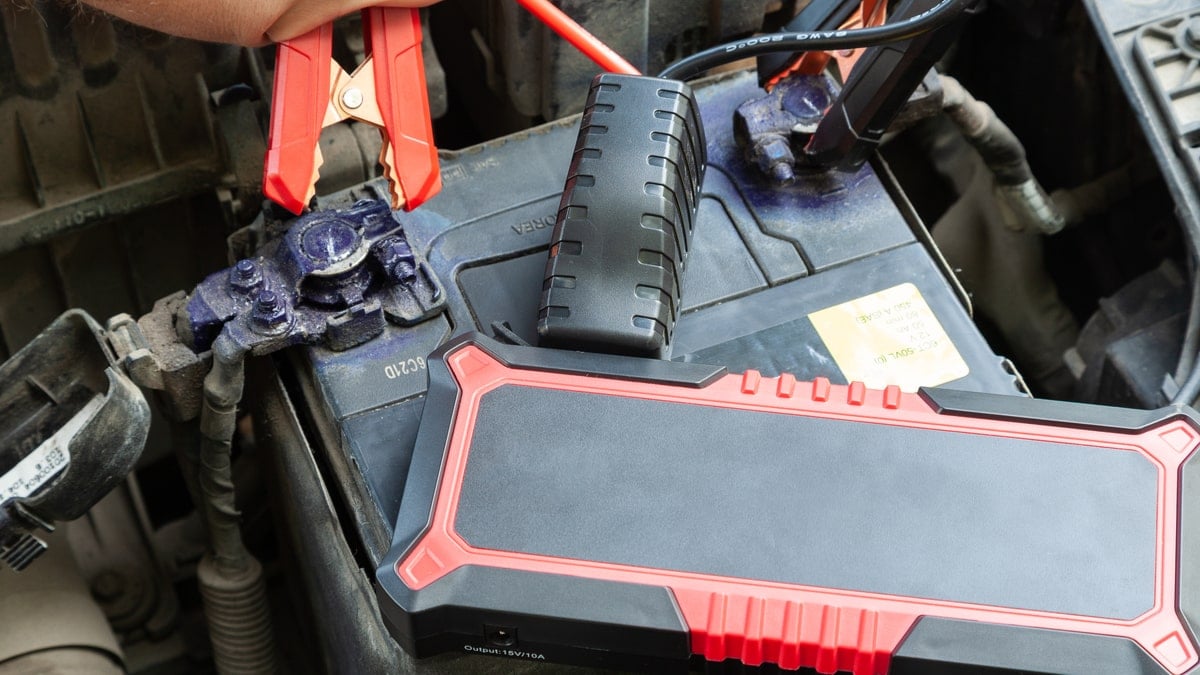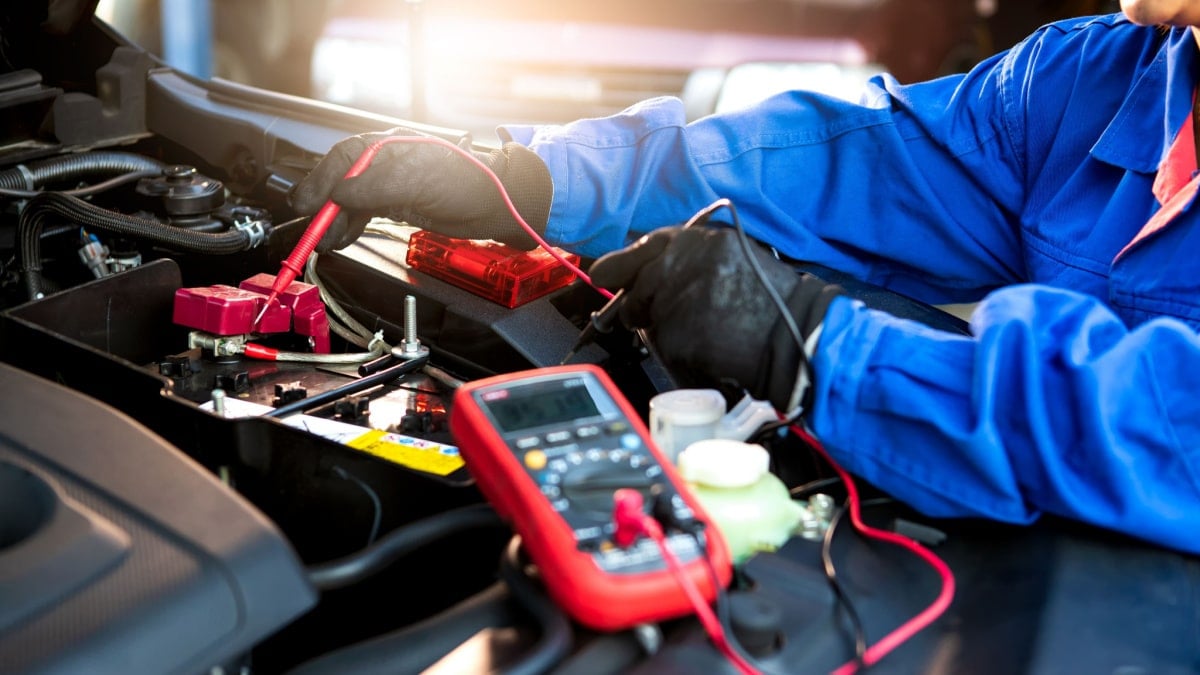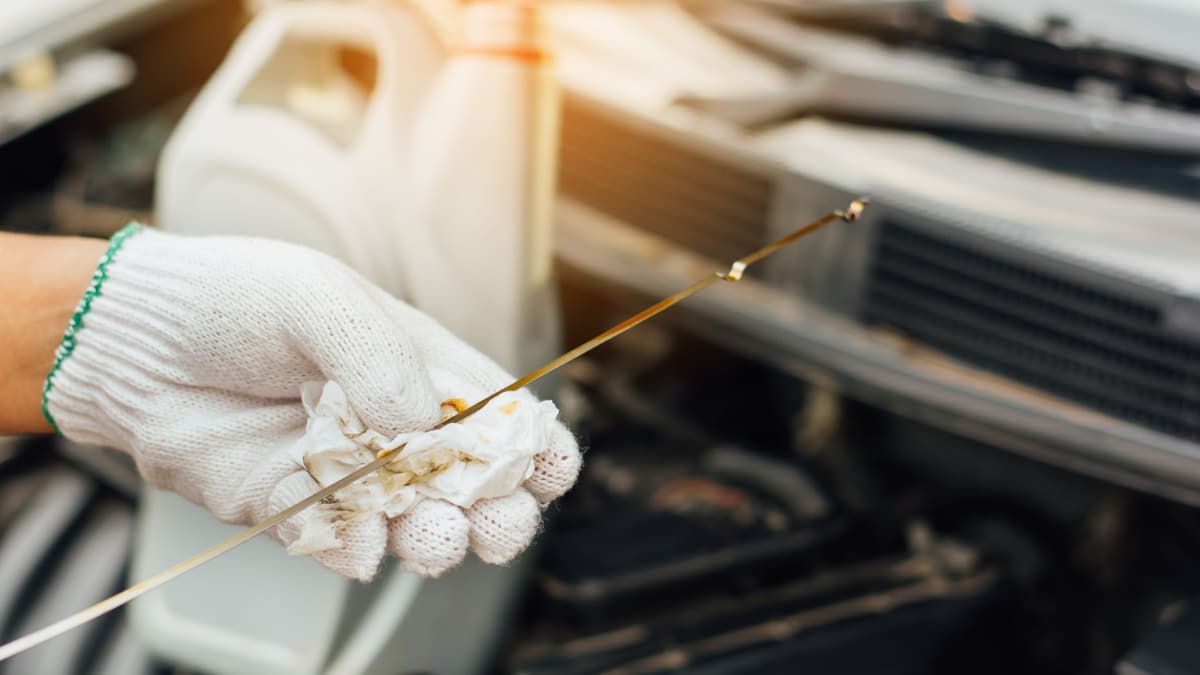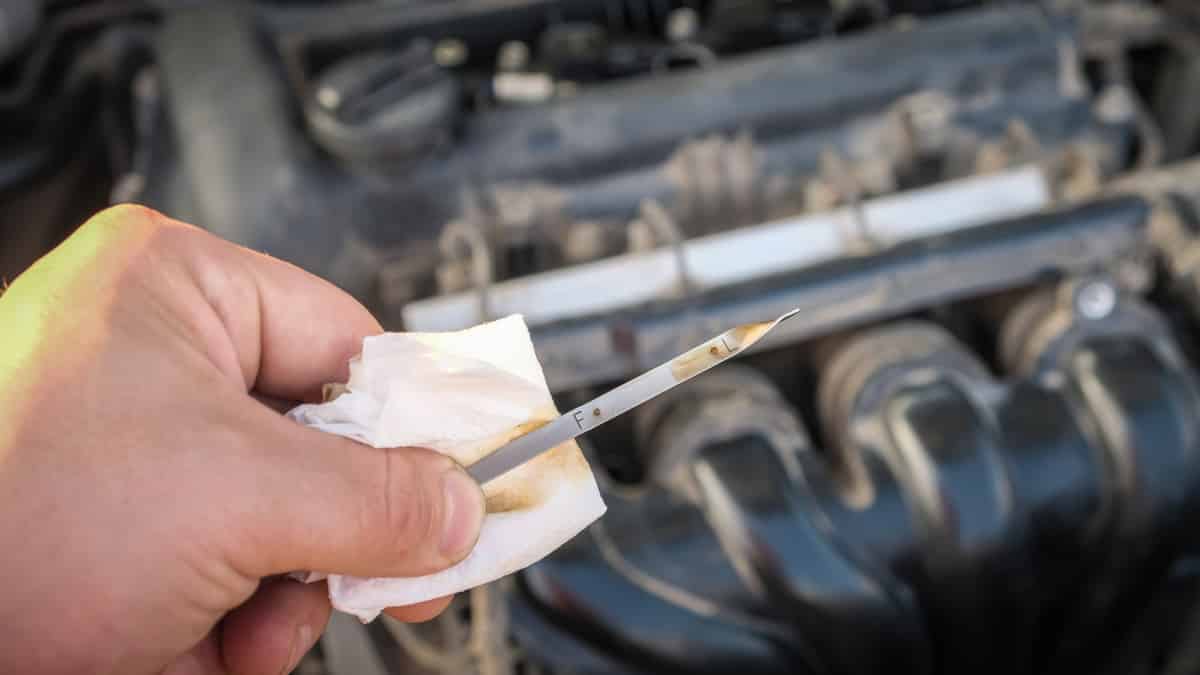When your car battery dies, you need to be prepared to jump start it so you can get back on the road. With a pair of jumper cables, the process isn’t as difficult as you might have thought.
In this guide, we touch on all the steps in-depth. We also look at how to charge a car battery with a portable jump starter, along with the steps needed to get your hybrid or EV running again. At the end, we outline a few steps to follow if the car battery won’t jump.
How to Jump Start a Car with Cables?
Position Booster Vehicle
Set the emergency brake just to be sure the vehicle doesn’t go anywhere. You also want all of the accessories turned off or they will draw power away from the battery.
Identify Battery Terminals
If you aren’t sure which terminal post is negative and positive, refer to the owner’s manual. You also want these posts to be free from corrosion, ensuring a better connection. If you notice any defects to the battery, it’s best not to jump it.
READ MORE: How To Tell Which Is Positive And Negative On A Car Battery?
Connect Cables
Start with the red clamp onto the positive terminal on your car’s dead battery. After that’s connected, you can put the other red clamp onto the other positive terminal of the good car battery.
Your next step is to attach the black clamp to the negative terminal on the starter vehicle first. On the car with the dead car battery, you want to connect it to an unpainted metal component of the car’s structure, such as an engine bracket or bolt. Some vehicles contain a grounded bolt just for this purpose. This is because there is a risk of battery explosion when you create a spark when attaching the jumper cable.
READ MORE: Which Battery Cable Should be Removed First, but Installed Last?
Start Car Engine
If nothing happens immediately, just wait a few more minutes. You can also push down the accelerator pedal of the good car to increase the idle and engine speed. Try again to start the dead car and see what happens.
Disconnect Cables
Again, you don’t want these metal clamps touching one another during the disconnection process. Take off the negative clamps first, beginning with the jumped vehicle. Once those are both off, you are ready to take off the positive clamp, starting with the car that provided the boost.
Run Car Engine
For this reason, we recommend driving the vehicle for at least twenty minutes after a jump. If you can take it on the highway at higher speeds, the process could finish even faster. Just to be safe, the first time you shut off the car, make sure you park it in an open space, just in case it needs to be jump started again.
RELATED: What Size Jumper Cables Do I Need? (2 vs 4 vs 6 Gauge)
How to Use a Portable Jump Starter on a Dead Car Battery?
It’s often better if you purchase a portable jump starter than if you have jumper cables. With the jumper box, you don’t need anyone else to help you get the battery powered back up. All you need to do is make sure the jumper box is charged up, which can be done easily overnight with a regular household outlet.
Before you use the portable jump starter, make sure you read the instructions included with the model you have. Each one can be slightly different.
However, here are some simple instructions on how to start a dead car battery with a portable jump starter:
- Connect the positive cable from the jumper to the battery’s positive terminal.
- Connect the negative cable from the jumper to the battery’s negative terminal or to an unpainted metal surface on the engine block. Do not allow the two jumper cables to touch one another.
- Secure the jump box in a location where it’s not going to fall.
- Turn on the jumper box.
- Try to start your vehicle. You may need to wait a few minutes until the charge is provided.
- Once the engine is running, disconnect the negative cable.
- Disconnect the positive cable last.
You should follow our previous guidelines about driving the car for at least twenty minutes after the vehicle starts. This time allows the battery to recharge from the power of the alternator.
RELATED: Dead Car Battery – Causes & What to do
How to Jump Start a Hybrid Car or Electric Vehicle?
As more people choose to drive a hybrid or electric vehicle, there are more questions about what to do if a battery dies. Even though there are special batteries in these efficient vehicles, you should still have a 12-volt model that is similar to what’s found in your gas- or diesel-powered car.
With the hybrid 12-volt battery, you can jump start it the same way. However, many of these batteries are located in unique places. You might not find it in the same space you would on a gas-powered car. Instead, you may need to reference your owner’s manual to see where it’s located.
The EV also has a 12-volt battery to keep the electronics running when you aren’t using the engine. If you use up all of the power in this battery, it might need to be jumped to get the electric engine running again.
However, you won’t be able to use another EV for this service. It’s not configured in a way that’s beneficial. Instead, you need to jump start the EV with a gas- or diesel-powered car unless you choose to own a portable jump starter, which seems to be the best solution.
RELATED: 6 Symptoms of a Bad Car Battery, Location, Function & How to Test it
What to Do if the Car Battery Won’t Jump?
If you can’t get the dead car battery to start, you need to troubleshoot what’s causing the problem. Here are a few questions and possible solutions that might help.
- Does the car make a clicking noise when trying to start? It’s possible that the starter is damaged and needs to be replaced.
- Is the electrical system (headlights, accessories, etc.) still turning on? If so, the ignition switch or starter could be to blame.
- Is the car dying after you get the battery jumped and started? It’s possible that the alternator has failed, making it difficult to recharge the battery once you have jumped it.
If you aren’t sure how to troubleshoot the charging system, it’s best to reach out to a professional. You can take your battery, starter or alternator to most auto parts stores for free diagnostics. Otherwise, you want to visit your local repair shop for a deeper dive into what’s wrong. It’s best to pay a little extra for help versus attempting a repair you don’t know how to do and creating more problems.
RELATED: 5 Symptoms of a Bad Starter (& Replacement Cost)
What happens if you connect the negative battery terminal first?
Unless you make a mistake, connecting the negative battery terminal first will make no difference. However, if you connect the negative terminal first, because there is negative charge in your car’s chassis, there is a risk of sparks and short-circuiting the battery if you touch the chassis with the positive terminal.
Why don’t you connect the negative terminal when jumping a car?
It is better to connect the negative jumper cable to a clean metal surface, such as a grounded bolt, as there is less risk of igniting the battery acid fumes with a spark. If you ignite the battery acid fumes, it can cause the battery to explode, resulting in serious injury or even death.
How long should you jump a dead car battery?
Depending on the size of your battery and the jumper cable size, you may need to jump it for anywhere from 30 seconds to 3 minutes before making a starting attempt. Once the car is started, let it run for at least 15 minutes to give the battery a chance to recharge.
Why do you connect the positive terminal first?
You connect the positive terminal first because the body of the car is negatively charged, and if you connect the negative jumper cable first, you risk touching the body with the positive battery cable. This will create sparks that can lead to fires or explosions if you’re unlucky.
Having the knowledge of how to jump-start a car is very useful when out on the road and a knowledge that every car driver should have. It’s actually quite simple and if you learn it once, you’ll probably remember it for the rest of your life.
I hope you enjoyed this guide and now have the knowledge to start any car if you find yourself in this situation.
Learn more:
- 7 Best Car Batteries – Review & Buyer’s Guide
- How to Test a Car Alternator (5 Steps)
- How Much Does It Cost to Tow a Car?
Categories: Car Battery, Guides
